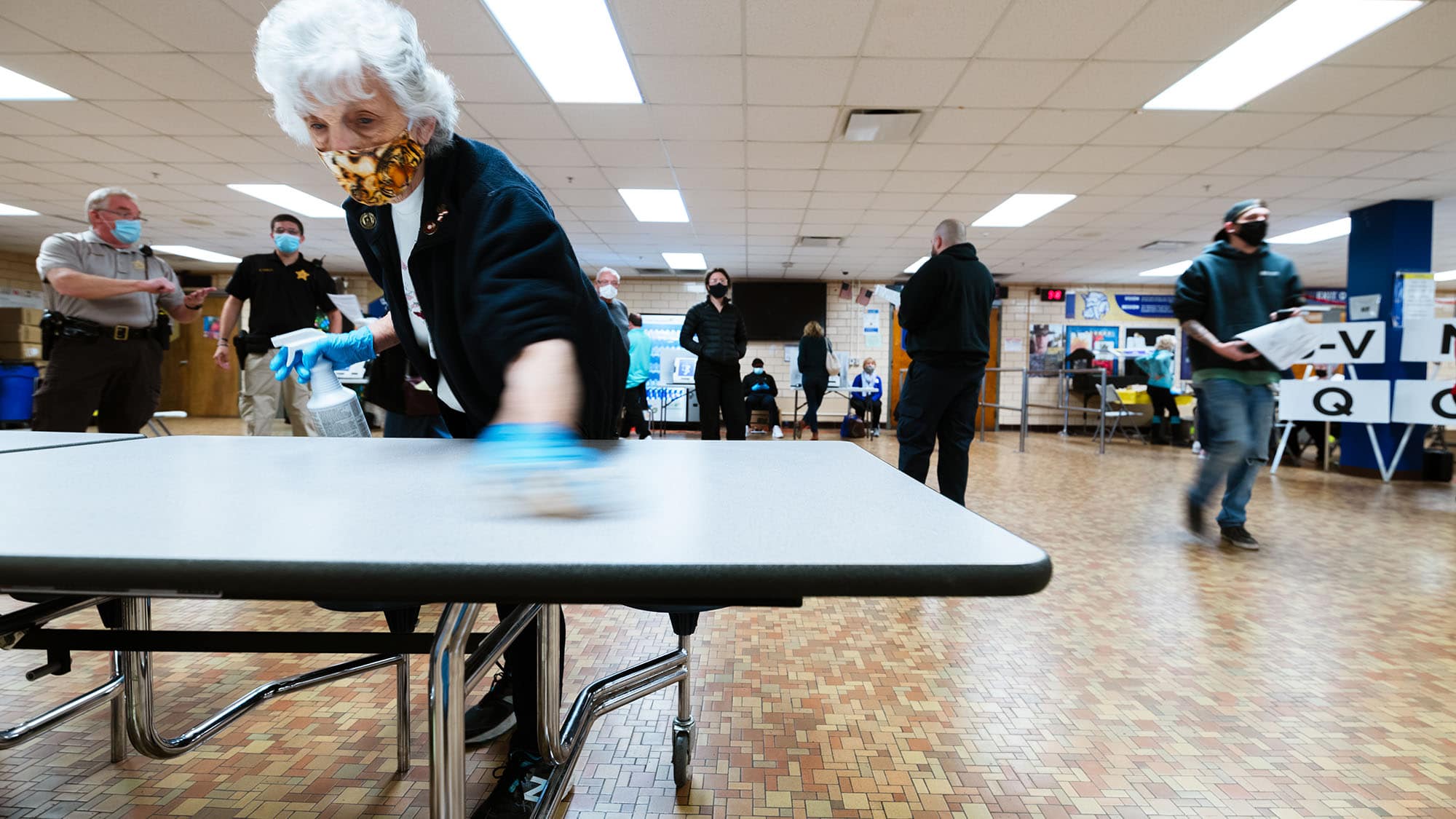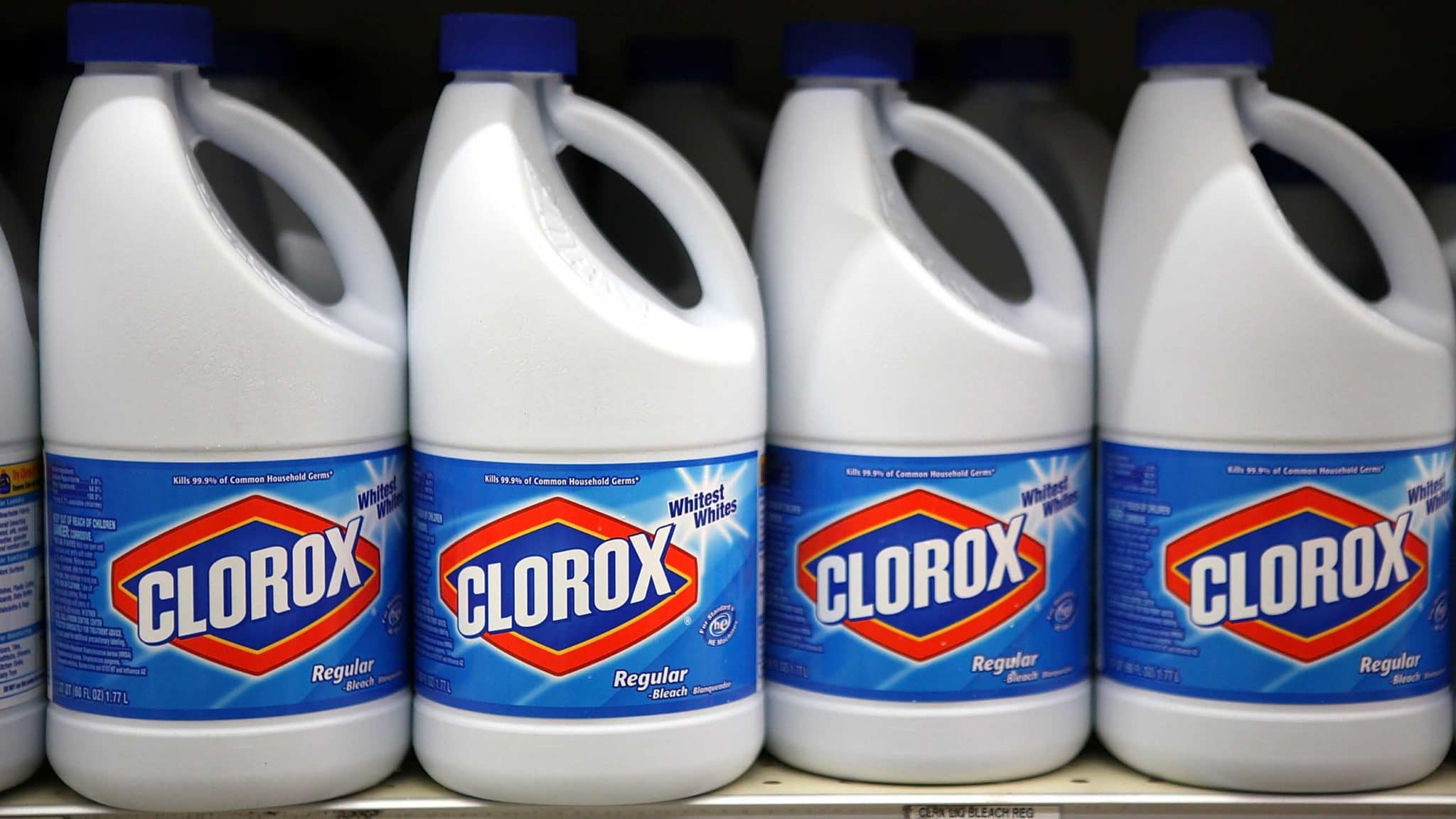A Curious Union: Clorox, Cleveland Clinic, and the CDC Foundation
As a second wave of Covid-19 infections tore through the United States in the summer of 2020, a partnership was forged between the Cleveland Clinic, one of the nation’s premiere medical centers, and the Clorox Company, the California-based maker of surface disinfectants. Sales of Clorox products had been soaring since the beginning of the pandemic, when public health agencies were still warning that SARS-CoV-2, the virus that causes Covid-19, could lurk on surfaces, sickening people who touched them. The company’s stock was also soaring, and at times it struggled to keep up with demand.
Under the partnership, the company and the clinic would co-produce public health guidelines to help the public navigate the Covid-19 pandemic. The arrangement continued into March of this year, when the CDC Foundation — an independent nonprofit chartered by Congress to support the Centers for Disease Control and Prevention — joined the group. Their ongoing campaign, the Clorox Safer Today Alliance, includes ads for the brand that bear the Cleveland Clinic and CDC Foundation logos. The Alliance advises companies — including United Airlines and AMC Theatres — and individuals on navigating Covid-19 reopening, with an emphasis on disinfecting surfaces.
This seemingly benevolent union in the name of public health has a problem, critics say: a lack of compelling evidence that surface disinfection plays any significant role in halting the spread of Covid-19. Despite early speculation among experts that surface contact was a key mode of SARS-CoV-2 transmission and subsequent rush among consumers to purchase cleaning products at the outset of the pandemic, the science supporting frequent surface disinfection as a response to Covid-19 has largely faltered, many experts say.
Indeed, after nearly 18 months of investigation, most scientists believe that airborne transmission is the chief concern, and that overuse of surface disinfectants may well do more harm than good. “Your efforts at cleaning are better spent towards cleaning the air than cleaning the surfaces,” said Linsey Marr, a professor of civil and environmental engineering at Virginia Tech and a prominent expert on Covid-19 transmission.
Given this, the continued relationship between two major public health organizations and the Clorox Company — which appears well positioned to profit from a particular interpretation of the science — has some critics raising pointed questions about the appropriateness of the arrangement and the misleading messages it might send to consumers. It also comes amid ongoing scrutiny by experts and advocates of the effects of corporate donations on scientific research and public health. Clorox donated $1 million to the Cleveland Clinic this spring, and a press release for the Safer Today Alliance notes that the company also donated $1 million to the CDC Foundation in early 2020.
Some of the Alliance’s messaging does refer to broader goals, and a Clorox representative emphasized that the campaign seeks to target transmissible diseases and related public health protections well beyond the current pandemic. But Covid-19 remains front-and-center in much of the Alliance’s promotional material and in Clorox’s own video spots heralding the partnership — which prominently feature both CDC Foundation and Cleveland Clinic branding — workers wiping, misting, and otherwise treating surfaces with disinfectants have the starring role.
Emanuel Goldman, a microbiologist at Rutgers University and vocal skeptic of disinfection as a Covid-19 deterrent, described the arrangement as “crass commercialism.”
Representatives of the Cleveland Clinic declined to make anyone available for an interview with Undark, and a prepared statement issued by the nonprofit hospital system did not directly address questions about the science behind disinfection and surface transmission of SARS-CoV-2. In an email message, Clorox spokesperson Molly Steinkrauss said that while transmission of Covid-19 via surfaces is “a low risk, it’s not zero,” and the use of disinfectants “is a part of a holistic strategy of prevention methods that we continue to emphasize particularly for public spaces where contamination of surfaces is more unknown.” She added that disinfection can also help fight pathogens like influenza and norovirus.
But Goldman, who remains skeptical, suggested that the arrangement with Clorox is building on an erroneous precedent set early in the pandemic.
“They are playing,” he said, “upon people’s fears.”
During the early days of the Covid-19 pandemic, guidance from the Centers for Disease Control and Prevention and other health agencies suggested that the virus was probably spreading via surfaces, a process known as fomite transmission. Companies and governments invested millions in electrostatic sprayers and extensive cleaning protocols. In one viral video from March 2020, a Michigan physician showed viewers how to disinfect their groceries with Lysol.
Not all experts were convinced. In July, Goldman published a commentary in The Lancet arguing that fomite transmission “has been assumed on the basis of studies that have little resemblance to real-life scenarios” and that the risk of catching the virus from contact with surfaces was “very small.” Later that month, a widely read essay in The Atlantic described the push to sanitize surfaces as “hygiene theater” – a performance that made people feel safer, but that seemed to have little support from infectious disease research.
At the same time, some researchers began to express concern that all those powerful cleaners could be having unintended health effects — potentially driving the emergence of antimicrobial-resistant super-pathogens or producing toxic fumes in households. A CDC report published in April 2020 noted a sharp rise in calls to poison control centers about exposure to disinfectants, coinciding with the stay-at-home orders issued early in the pandemic.
“People just think the pandemic’s the most dangerous thing in our lives, so anything else should come in second or third place,” said Li Li, an environmental modeler in the School of Public Health at the University of Nevada, Reno. But Li said his own research suggests that heavy daily use of full-strength disinfectants in the home could also pose risks — findings that have led him to change his own disinfection practices.
Today, many experts say, scientific opinion has largely shifted away from emphasizing surface transmission. “Where things stand now is that I think there’s a consensus — there are still some holdouts, vocal holdouts — but there’s a consensus that the virus spreads mainly through the air, by breathing it in in very small respiratory droplets that we call aerosols,” said Marr.
These sorts of assessments appear to have had little bearing on the Clorox and Cleveland Clinic guidelines. In March, alongside the announcement of Clorox’s $1 million donation to the Cleveland Clinic, the two organizations and the CDC Foundation formally launched the Safer Today Alliance. A commercial promoting the Alliance largely depicts people spraying down surfaces, as do photos in public safety guidelines released later that month. (The guidelines, still co-produced by Cleveland Clinic and Clorox, do not mention the CDC Foundation.)
In Clorox’s own video spots heralding the partnership — which prominently feature both CDC Foundation and Cleveland Clinic branding — workers wiping, misting, and otherwise treating surfaces with disinfectants have the starring role.
Soon after, the CDC began issuing recommendations that would seem to conflict with the messaging of the partnership. Indeed, just weeks after the Alliance launched, the agency de-emphasized disinfection in its official recommendations to the public, and it stopped recommending that people routinely disinfect surfaces in their homes. (It continued to recommend some disinfection in public spaces.) During a briefing that month, CDC scientist Vincent Hill suggested that disinfection was giving people “a false sense of security” and possibly exposing people to toxic chemicals. “In most situations, cleaning surfaces using soap or detergent, and not disinfecting, is enough to reduce the already low risk of virus transmission through surfaces,” Hill said, according to CNN.
Clorox has continued to promote the campaign. Guidance on both the Clorox and Cleveland Clinic websites stresses disinfection. And while CDC guidelines note that surface transmission of SARS-CoV-2 appears to be very rare, the Clorox-backed documents do not have such caveats.
Cleveland Clinic declined to make anyone available for an interview with Undark. In a statement provided by spokesperson Victoria Vinci, the nonprofit said it was focused on helping businesses as they slowly renew in-office activities: “Cleveland Clinic offers guidance that will help businesses working with the Alliance limit the risk of Covid-19, help protect their employees and customers, and sustain a healthier work environment as they reopen.”
Still, the campaign’s emphasis on surface disinfection continues to confuse some experts. “The evidence for airborne spread is very strong indeed,” wrote Trish Greenhalgh, a physician-researcher at Oxford University who has published extensively on SARS-CoV-2 transmission, in an email to Undark. The evidence for droplet transmission via surfaces “is exceptionally weak,” she added. “Disinfection plays little or no role in controlling the spread of an airborne disease, obviously.”
Some experts also say that surfaces can be cleaned effectively with less toxic chemicals. “Even if you’re worried about surfaces, all you need is soap and water,” said Goldman. “Or a little alcohol. That kills the virus. You do not need Clorox; you do not need bleach; you do not need disinfectant. The virus is fragile. It dies easily and quickly.”
After reviewing more details of the Safer Today Alliance campaign, Goldman followed up in an email. “This is outrageous, given what we have learned in the past year,” he wrote. “The Cleveland Clinic knows better.”
The Safer Today Alliance was born at a time when many experts and advocates were already expressing concern over the impact of corporate largesse on scientific research and public health. In the past several years, some of that attention has fallen on the CDC Foundation. Authorized by Congress in 1992, the foundation raises money for CDC programs, and, although separate from the public health agency, the organizations maintain close ties. Public donor reports show that pharmaceutical and biotechnology companies donate to the group.
In 2019, a petition from several watchdog groups argued that the CDC Foundation essentially allows companies to give money to the CDC, potentially compromising the cash-strapped agency’s independence. “It’s a way for companies to reach through and to influence the agency itself,” said Gary Ruskin, executive director and co-founder of U.S Right to Know, one of the groups behind the petition. (The group is principally funded by the Organic Consumers Association, an advocacy organization for the organic agriculture industry that has long battled government regulatory agencies over the use of genetically modified organisms on U.S. farms.)
Ruskin said an arrangement like the Safer Today Alliance — in which the CDC Foundation logo appears in marketing materials for a company — was new to him.
“This sort of thing makes it look like CDC is for sale, like for a little cash they’re going to endorse cleaning products or other commercial stuff,” Ruskin said. “It cheapens our Centers for Disease Control and Prevention to make it look like a pitchman for cleaning wipes.”
Support Undark MagazineUndark is a non-profit, editorially independent magazine covering the complicated and often fractious intersection of science and society. If you would like to help support our journalism, please consider making a tax-deductible donation. All proceeds go directly to Undark’s editorial fund. |
The CDC Foundation declined to make anyone available for an interview, but in detailed written responses to Undark, communications director Amy Tolchinsky said the decision to join the Safer Today Alliance was “independent of a donation.” Regarding the 2020 gift from Clorox, Tolchinsky wrote that “when the Foundation receives an offer of a donation during an emergency response, we review the donor and the donation to ensure that neither present a conflict of interest for the CDC Foundation.” The CDC Foundation, she added, has “no role or involvement” in setting CDC guidance.
The $1 million donated to the Cleveland Clinic will support the launch of the Clorox Public Health Research Fund. The fund will prioritize Covid-19 research, Cleveland Clinic wrote in its statement to Undark, and “will inform the development of tomorrow’s virus-fighting cleaners and other health and safety products, along with practices and protocols.”
In their comments to Undark, all three organizations characterized the partnership as a useful way to share public health guidance during a crisis. And Quinn Grundy, an assistant professor with the University of Toronto’s Faculty of Nursing who studies corporate influence on science and health care, said the arrangement might seem like a win-win: “Clorox wants to sell disinfecting things, and there’s germs out in the world, and we’re in the middle of a germy pandemic, and probably disinfecting’s good, and this might help us communicate with a lot of people.”
But the interests of those three organizations, Grundy added, may not always be aligned — something that becomes clearer as the scientific evidence shifts.
“In light of this alliance, in light of this money, I think it calls into question whether the Cleveland Clinic or the CDC can actually fulfill its mission,” she said, “which would be to communicate health information to the public based on the best available evidence there is at the time.”












Comments are automatically closed one year after article publication. Archived comments are below.
Thank you for this very interesting report. Unfortunately the establishment press will studiously ignore this obvious corruption.
The CDC Foundation’s website is worth a look. I have never before seen so much boiler-plate public relations empty jargon all in one place. Someone put in much effort to create glitz that says absolutely nothing. Well Done!
As a myalgic encephalomyelitis patient advocate I have long understood CDC to be captured by industry. For agencies such as FDA the revolving door between agency and industry is well-documented and obvious. NIH has its “public-private partnerships” to normalize obvious conflicts-of-interest to the point where no one notices.
And thanks to this report, we now also know how industry pulls the strings at CDC, and why the CDC Foundation is a well-kept secret.
Corporate influence at its best. A very curious union. What about how chemicals harm the immune system?
A classic example of quack science. Promotion of questionable and potentially dangerous practices to vulnerable members of the public is disgusting.